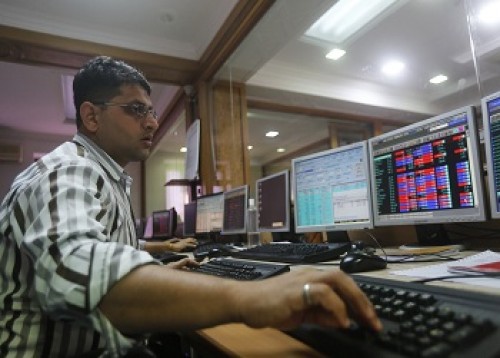Aluminium trading range for the day is 240-246 - Kedia Advisory

Gold
Gold prices gained slightly by 0.04%, closing at 78,566 as investors weighed U.S. economic strength and anticipated a host of U.S. economic data influencing the Federal Reserve's rate decisions. With key employment and inflation data on the horizon, and the approaching U.S. presidential election, market participants are seeking clarity on the Fed’s rate stance. Recent data indicated a resilient U.S. labor market, with a marked drop in unemployment claims and robust private sector momentum reflected in the S&P PMI. Despite these economic signals, geopolitical uncertainties, particularly in the Middle East, along with U.S. election volatility and potential central bank easing, continued to support gold's appeal as a safe-haven asset. In India, high domestic gold prices led physical gold dealers to offer discounts up to $8 an ounce, compared to a $3 premium last week, as record prices softened demand ahead of major festivals. China, the world’s top gold consumer, also narrowed discounts, with prices ranging from $3 to $14 below international spot prices, compared to larger discounts last week. In other Asian markets, premiums and discounts remained mixed: in Hong Kong, gold was sold at a discount of up to $2 or a premium of $1.20, while Singapore saw a range of $0.80 discount to $2.20 premium. China’s net gold imports through Hong Kong surged in September, yet overall consumption dropped 11.18% year-on-year, primarily due to high prices deterring jewelry purchases. Technically, the market saw short covering, with open interest dropping by 3.18% to 14,197 as prices rose by 34 rupees. Support for gold stands at 78,255, with a potential test of 77,945 on further declines, while resistance is seen at 78,730, with potential to reach 78,895 if upward momentum holds.
Trading Ideas:
* Gold trading range for the day is 77945-78895.
* Gold steadied on signs of strength in the US economy
* Traders await a slew of U.S. economic data for guidance on the U.S. Federal Reserve's interest rate stance.
* China Jan – Sept gold consumption slides 11% as high prices deter buying appetite
Silver
Silver prices rose by 0.3% to settle at 97,424, driven by a slight weakening in the dollar index as traders prepare for a packed week of U.S. economic data. Anticipated releases, including GDP growth estimates, PCE inflation, and payroll data, are expected to provide clearer insights into the economy’s trajectory ahead of the Federal Reserve’s monetary policy decision and the U.S. presidential election. Current market sentiment shows a high probability (96%) of a 25 basis point rate cut by the Fed this month, while the likelihood of an additional 50 basis points cut has slightly reduced to 68% from 72% last week. Supporting sentiment, U.S. consumer confidence was revised up to 70.5 for October, marking its highest in six months, while durable goods orders fell by 0.8% in September, aligning closely with market expectations. On the industrial front, India’s silver imports have surged, driven by robust demand from the solar panel and electronics sectors, and as investors shift towards silver as a potentially higher-yielding asset compared to gold. Trade data shows India’s imports jumped significantly to 4,554 metric tons in the first half of 2024 from just 560 tons last year, reflecting stockpiling efforts amid depleted inventories from 2023. Technically, silver is experiencing short covering, with open interest declining by -1.39% to settle at 22,744 as prices rose by 290 rupees. Immediate support is positioned at 96,380, with potential downside to 95,330 if breached, while resistance is expected at 98,200, and a break above this could drive prices to test the 98,970 level. With global demand dynamics and economic data as key drivers, silver markets are likely to remain active and sensitive to U.S. policy signals.
Trading Ideas:
* Silver trading range for the day is 95330-98970.
* Silver gains as dollar index edged lower as traders brace for a busy week of data
* Easing geopolitical risks in the Middle East also pressured precious metals.
* Consumer sentiment for the US was revised higher to 70.5 in October 2024 from a preliminary of 68.9
Crude oil
Crude oil prices dropped by 5.46%, settling at 5,710, as concerns over Middle Eastern supply disruptions eased after Israel's airstrikes avoided Iranian oil facilities. Israeli strikes were in response to previous Iranian missile attacks, yet their restraint has reduced fears of further escalation, providing some relief to energy markets. However, ongoing geopolitical tensions remain high, with Israel launching additional strikes on Syria. Demand concerns from top consumer China continue to weigh on oil sentiment, with recent data showing declining industrial profits despite government stimulus. Market fundamentals are also shifting. The latest API report indicated a larger-than-expected rise in U.S. crude inventories by 1.6 million barrels, compared to the forecasted 0.7 million, although gasoline and distillate stocks saw declines. Meanwhile, the EIA reported a significant increase of 5.474 million barrels in U.S. crude inventories, above the expected 0.7 million, highlighting ongoing supply pressures. U.S. oil production continues to expand, reaching a record 13.5 million barrels per day, yet demand forecasts have been revised down due to weakening economic activity in both China and North America. China has also set a high crude oil import quota for 2025 at 257 million metric tons, potentially bolstering future demand from non-state importers. The EIA now expects global oil demand growth of 1.2 million bpd next year, slightly lower than prior forecasts, alongside reduced production estimates for the U.S. Technically, crude oil is experiencing fresh selling pressure, with open interest increasing by 13.71% to 15,203 as prices declined by 330 rupees. Support for crude oil is seen at 5,609, with a further drop potentially testing 5,508. Resistance is expected around 5,850, with a move above this level possibly targeting 5,990.
Trading Ideas:
* Crudeoil trading range for the day is 5508-5990.
* Crude oil tumbled after Israel’s retaliatory strikes on Iran avoided the country’s crude facilities and nuclear infrastructure
* Signs of weak economic activity in China continued to weigh on sentiment.
* Elsewhere, market participants are watching for potential output adjustments from OPEC+ and the implications of the US election.
Natural gas
Natural gas prices fell sharply by 7.2% to settle at 239.6 due to forecasts of mild weather across the U.S. through mid-November, which reduced expected demand. An increase in output and a drop in oil prices after a limited Israeli attack over the weekend also weighed on natural gas prices. Additionally, for the first time since April, speculators turned net short on futures and options, as indicated by the Commodity Futures Trading Commission’s Commitments of Traders report. Warmer-than-average temperatures forecasted across the Lower 48 states are likely to allow utilities to add more gas to storage than usual. LNG feedgas supply is expected to stay below record levels due to maintenance at facilities in Louisiana, including Cheniere Energy and Cameron LNG. According to the U.S. Energy Information Administration (EIA), natural gas production in 2024 is expected to decline slightly for the first time since 2020, with output estimated to drop to 103.5 billion cubic feet per day (bcfd) from a record 103.8 bcfd in 2023. Meanwhile, domestic consumption is projected to reach a new high at 90.1 bcfd in 2024, and LNG exports are forecasted to increase to 12.1 bcfd. U.S. utilities recently added 80 billion cubic feet to gas storage, surpassing the expected 61 billion cubic feet, lifting storage levels in the Lower 48 states to 3.785 trillion cubic feet, which is 2.9% above last year and 4.6% above the five-year average. Technically, natural gas is experiencing fresh selling with a significant increase in open interest by 27.71% to 21,645 as prices dropped by 18.6 rupees. Key support is at 231, with a potential drop to 222.5 if breached, while resistance is set at 253.1, and a move above this could drive prices to test 266.7.
Trading Ideas:
* Naturalgas trading range for the day is 222.5-266.7.
* Natural gas dropped on forecasts for mild weather through at least mid-November, less demand next week.
* Another factor weighing on gas prices was a drop in oil futures after a limited Israeli attack on Iran over the weekend.
* Speculators turned their net long futures and options positions to net short last week for the first time since April.
Copper
Copper prices edged up by 0.17%, closing at 838.1 as traders remain cautious with mixed signals on demand and key upcoming events like the National People’s Congress meeting on November 4-8 and the U.S. election. Investors anticipate potential announcements from China on debt and fiscal measures, hoping for indications of economic support. However, China’s recent data reveals challenges, as industrial profits contracted sharply over the first nine months, hinting at weaker demand in the world's top metals consumer. In response, the People’s Bank of China (PBoC) plans to carry out reverse repurchase operations monthly, aiming to ensure adequate liquidity in the financial system. Supply-side factors indicate a stable copper output, with China’s refined copper production reaching 1.14 million metric tons in September, a slight increase from the previous year. Meanwhile, the global refined copper market posted a 54,000 metric tons surplus in August, showing an easing from July’s 73,000 metric tons surplus. In China, copper imports surged by 15.4% in September to 479,000 metric tons, driven by seasonal demand and an improved consumption outlook. The rise in copper concentrate imports, totaling 2.44 million tons in September, also reflects an ongoing appetite for raw materials. Technically, the copper market is under fresh buying momentum, with open interest increasing by 3.06% to 7,707 as prices gained by 1.4 rupees. Copper is supported at 834, with a potential test of 829.7 if bearish sentiment strengthens. On the upside, resistance is seen at 841.6, and a breakout above this level could see prices testing 844.9, reflecting a balanced yet cautious market outlook amid global economic uncertainties.
Trading Ideas:
* Copper trading range for the day is 829.7-844.9.
* Copper steadied amid caution prevailed amid conflicting signals on demand and ahead of a key meeting in China and the U.S. election.
* Industrial profits in China declined at the fastest pace since the pandemic in the first nine months of the year amid persistently weak demand.
* The People's Bank of China (PBoC) said it will conduct so-called outright reverse repurchase operations with primary dealers starting Monday, October 28.
Zinc
Zinc prices rose by 0.9% to settle at 289.95 amid renewed concerns over supply shortages. Recently, a single party held as much as 79% of available LME zinc stocks, raising fears of limited short-term supply. Although this tension eased somewhat with an inflow of 10,275 tons to LME warehouses in Singapore, bringing total stocks to 242,425 tons, supply risks remain. Russia’s Ozernoye zinc project faces potential disruptions due to sanctions impacting equipment procurement, which could affect global supply forecasts for 2025. Ozernoye, launched in September, aims for full capacity of 320,000 metric tons by 2025, representing roughly 2.5% of the projected global supply. The International Lead & Zinc Study Group (ILZSG) had factored Ozernoye’s output into its 2025 forecast, projecting an 8.9% growth in non-China zinc supply. In August, the global zinc market deficit widened to 66,300 metric tons from July’s 51,000 tons, with an overall surplus of 127,000 tons in the first eight months of 2024, notably less than last year’s surplus of 418,000 tons. China's refined zinc production showed mixed trends, rising over 2% month-on-month in September but declining more than 8% year-on-year. Increased output in October is expected, with production growth in Inner Mongolia, Shaanxi, and Hunan following maintenance recovery. However, Gansu may see reduced output due to routine maintenance. Technically, zinc is witnessing fresh buying with open interest increasing by 6.88% to 2,641 as prices rose by 2.6 rupees. Immediate support is seen at 285.2, with a further test likely at 280.4 if breached, while resistance is positioned at 292.5. A break above this level could see prices testing 295, as the market remains responsive to supply dynamics and production adjustments.
Trading Ideas:
* Zinc trading range for the day is 280.4-295.
* Zinc prices gains amid concerns of supply shortages.
* A single party recently held up to 79% of available LME zinc stocks, sparking fears of limited short-term supply.
* The ILZSG included the ramp-up of Ozernoye in its forecasts of robust growth of 8.9% in new mining zinc supply outside China in 2025.
Aluminium
Aluminium prices declined by 0.39% to settle at 242.65, as robust U.S. economic data tempered expectations for rapid Federal Reserve rate cuts. Despite this, the downside remains limited as alumina shortages triggered significant buying interest from funds. Guinea, a major exporter, recently suspended bauxite exports from Guinea Alumina Corporation, heightening alumina supply concerns. LME data shows significant positions with over 40% of open interest in December futures for aluminium buys and 30-39% of open interest for January sells, underscoring speculative interest around these contracts. Goldman Sachs recently increased its 2025 aluminium price forecast to $2,700 per ton, up from $2,540, citing China’s demand potential bolstered by stimulus measures. Meanwhile, the International Monetary Fund (IMF) revised its global growth outlook for 2025 slightly down to 3.2%, attributing risks to factors such as geopolitical conflicts and trade protectionism. Production data highlights resilience in aluminium supply. China’s aluminium output rose 1.2% year-on-year to 3.65 million tons in September, supported by steady hydropower availability in Yunnan province. Daily production reached 121,667 tons, up from August's 120,322 tons. Industry profits averaged 2,379 yuan per ton in September, a 12.2% increase due to higher prices. Global aluminium output rose 1.3% year-on-year in September to 6.007 million tons, and July saw a 2.4% increase to 6.194 million tons, driven by production gains in China and the rest of Asia. Technically, the aluminium market is experiencing fresh selling pressure, with a 1.57% increase in open interest to 3,503 as prices declined by 0.95 rupees. Aluminium finds support at 241.3, with a potential further test at 240, while resistance lies at 244.3. A break above this level could see prices testing 246, reflecting a mixed outlook amid supply concerns and strong global production.
Trading Ideas:
* Aluminium trading range for the day is 240-246.
* Aluminium slipped amid signs of resilience in the US economy tempered expectations for aggressive Fed interest rate cuts.
* LME data showed one large futures position at more than 40% of open interest to buy aluminium in December.
* Goldman Sachs raised its 2025 aluminum price forecasts citing higher demand potential in top consumer China following stimulus measures.
Cotton
Cotton candy prices fell by 0.44%, settling at 56,110, as the yarn market faced sluggish demand and payment challenges. The USDA recently lowered India’s cotton production estimate for the 2024-25 season to 30.72 million bales, with ending stocks also reduced to 12.38 million bales due to crop damage from excessive rains and pest issues. Meanwhile, global cotton production is projected to increase by over 200,000 bales, driven by rises in China, Brazil, and Argentina, which are expected to offset declines in the U.S. and Spain. This season, India’s cotton acreage dropped by approximately 9%, attributed to shifts in cropping patterns, with farmers in Gujarat opting for groundnuts over cotton for better returns. India’s cotton production is forecasted to decrease by 7.4% to 30.2 million bales, prompting expectations of higher imports at 2.5 million bales, up from 1.75 million last year, while exports are projected to decline to 1.8 million bales. This shift is likely to lend support to global prices, as India, the world’s second-largest cotton producer, may reduce its export volume. Additionally, steady domestic demand for cotton at 31.3 million bales is anticipated for 2024-25, despite supply constraints. The U.S. cotton balance sheet for 2024-25 reflects lower production, mill use, and exports, with production impacted by Hurricane Helene. Global ending stocks have slightly declined to 76.3 million bales, with trade down by over 500,000 bales primarily due to reduced imports by China. Technically, the cotton candy market is experiencing long liquidation with stable open interest, while prices fell by 250 rupees. Support is positioned at 55,870, with further downside potentially testing 55,640, while resistance stands at 56,360, with a breakout above this level possibly pushing prices to 56,620.
Trading Ideas:
* Cottoncandy trading range for the day is 55640-56620.
* Cotton dropped as yarn markets face weak demand and payment constraints.
* India's cotton production in 2024/25 is likely to fall by 7.4% from a year ago to 30.2 million bales.
* Cotton production is projected to increase in China, Brazil, and Argentina, more than offsetting reductions in the US and Spain.
* In the global 2024/25 cotton balance sheet, beginning stocks, production and consumption are increased.
Turmeric
Turmeric prices fell by -1.12% to close at 13,108 amid subdued demand and increased arrivals. Price pressure emerged as projected turmeric acreage for the upcoming season is estimated to be 30-35% higher than last year, signaling a potential rise in production. Favorable weather conditions, with recent dry spells followed by light rains, have supported crop growth, particularly in the Vidarbha region and key growing areas in Telangana. Last week, Vidarbha received 20 mm of rain, while Telangana recorded 18 mm, aiding crop development. However, some downside pressure was limited by reports of possible crop damage due to heavy rains, which could lead to higher losses than initially forecasted. With five months remaining until harvest, ongoing low supply and adverse weather conditions may provide support for prices in the coming weeks. Internationally, harvesting has accelerated in Indonesia under dry weather conditions, while in India, turmeric sowing on the Erode line is reported to have doubled, and major states like Maharashtra, Telangana, and Andhra Pradesh reported 30-35% higher sowing. India’s overall turmeric acreage has increased from 3-3.25 lakh hectares last year to an estimated 3.75-4 lakh hectares this season, supporting future supply expectations. April-August 2024 turmeric exports dropped by 6.46%, with a modest rise of 5.72% in August alone, while imports soared by 340.21%, reflecting increased demand amid tight domestic stocks. Technically, turmeric is experiencing long liquidation, with open interest down by -2.41% to 11,950 as prices declined by 148 rupees. Immediate support is at 13,032, with further downside potential to 12,956 if this level breaks. Resistance is positioned at 13,202, and a break above could test 13,296. Market sentiment remains cautious, with supply and demand factors closely watched.
Trading Ideas:
* Turmeric trading range for the day is 12956-13296.
* Turmeric dropped due to lower demand amid a rise in arrivals.
* Pressure also seen as the expected acreage for the upcoming season is estimated to be 30-35% higher than last year
* India’s festival season demand is expected to surge, particularly with CAIT forecasting 48 lakh marriages in the upcoming season.
* In Nizamabad, a major spot market, the price ended at 13775 Rupees dropped by -0.97 percent.
Jeera
Jeera prices dropped by 0.35%, closing at 24,405, as daily arrivals in Unjha, a key market, increased to around 15,000-16,000 bags. Current season stock estimates suggest farmers still hold about 35% of this year’s yield, and the carryover stock at the start of the new season is projected to be around 20 lakh bags. Despite the recent dip in prices, hopes for an improvement in jeera exports post-Diwali remain strong. October exports are expected to reach 15,000-17,000 tons, with further increases anticipated in November and December. Sowing for the next jeera season will begin after Diwali, though expectations point to reduced sowing this year, with an estimated 10% decrease in production overall and a 10-15% decline in Rajasthan's cultivation. Given India’s competitive pricing, with jeera quoted at $3,050 per tonne, India remains the world's cheapest source for jeera, attracting strong demand from major buyers like China. This price advantage, especially over China, is expected to bolster the Indian jeera market, as demand from Europe and the Middle East rises, driven by geopolitical tensions that disrupted production in traditional jeera-producing regions like Syria, Iran, and Turkey. Jeera exports saw substantial growth this year, with a 128% increase to 52,022 metric tonnes from July to September compared to last year, while exports from April to August rose by 61.44% year-on-year. Technically, jeera is under long liquidation, with a 4.75% decline in open interest to 1,686 as prices fell by 85 rupees. Jeera is currently supported at 24,110, with potential testing at 23,820 if downward momentum persists. Resistance is expected at 24,580, and a move above this level could push prices to 24,760.
Trading Ideas:
* Jeera trading range for the day is 23820-24760.
* Jeera prices dropped as arrival has increased and around 15,000 to 16,000 bags are coming daily in Unjha.
* There is a possibility of 25 percent reduction in cumin sowing in Gujarat
* Carryover stock of 20 lakh bags of cumin is estimated in the new season
* In Unjha, a major spot market, the price ended at 24992.9 Rupees dropped by -0.31 percent.
Views express by all participants are for information & academic purpose only. Kindly read disclaimer before referring below views





















